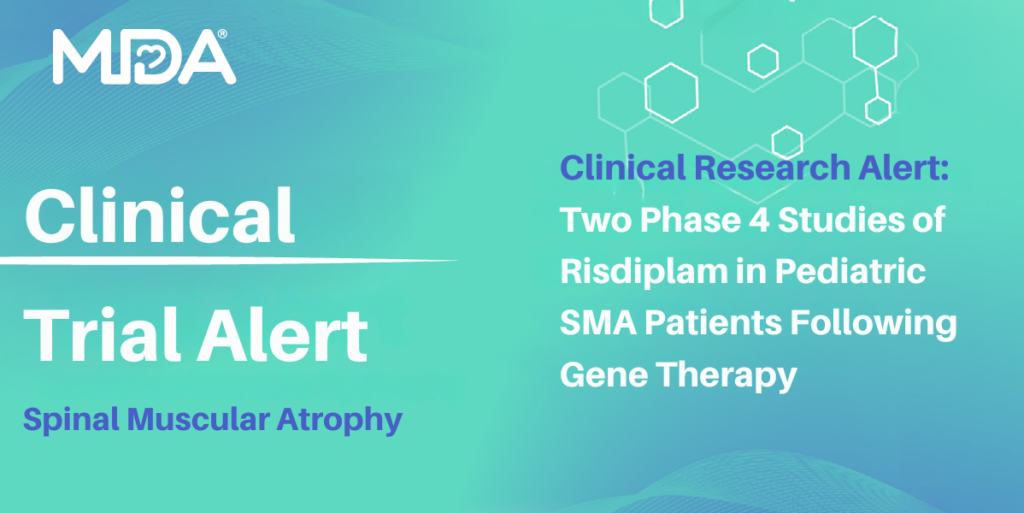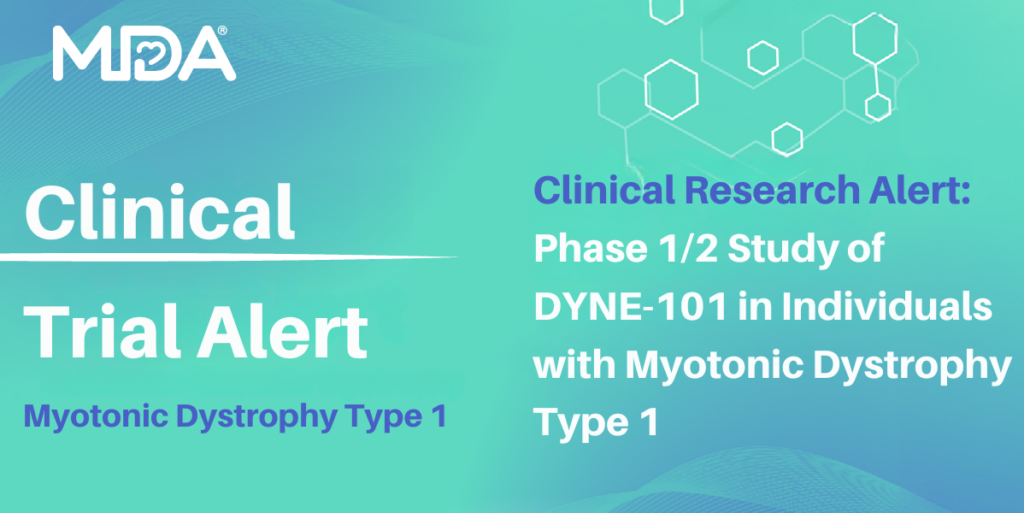
Simply Stated: Updates in Primary Mitochondrial Diseases
By Sujatha Gurunathan | Wednesday, November 26, 2025
5 Second Summary
“Simply Stated” is a Quest column designed to explain some terms and basic facts about neuromuscular diseases.
Find more at Mdaquest.org/tag/simply-stated
Mitochondria, often called the “powerhouses of the cell,” generate much of the energy that our bodies need to function. When mitochondria fail, organs that require high levels of energy, like the muscles, brain, and heart, can be affected, leading to conditions known as primary mitochondrial diseases. These diseases can result from genetic mutations in nuclear DNA (nDNA) or mitochondrial DNA (mtDNA). Studies estimate that primary mitochondrial diseases affect approximately 5-20 individuals per 100,000, depending on the population and diagnostic criteria. They are considered among the most common inherited metabolic disorders.
Symptoms of mitochondrial diseases
There are many different types of mitochondrial diseases, which can present with a wide range of clinical signs and symptoms. Skeletal muscles and the nervous system are commonly affected, but mitochondrial diseases can involve any organ system. Some clinical features that are commonly seen across mitochondrial disorders include:
- Muscle symptoms: weakness, exercise intolerance, fatigue, cramps, myalgia (pain and discomfort)
- Neurologic symptoms: developmental delay, seizures, stroke-like episodes
- Systemic involvement: cardiac, liver, kidney, endocrine, and gastrointestinal issues
Types of primary mitochondrial diseases
This post focuses specifically on primary mitochondrial diseases and not on conditions where mitochondrial dysfunction occurs secondary to another disorder. It is also not meant to be an exhaustive list of mitochondrial conditions, as this is a broad and complex area.
Primary mitochondrial diseases are diverse and may present differently in different individuals. They can be generally organized into four main clinical groups, based on which organs are affected and what symptoms occur.
Isolated Myopathic Forms
These disorders primarily affect skeletal muscle. Common features include exercise intolerance, proximal muscle weakness, and in some cases, breathing problems (respiratory insufficiency). Examples include:
· Isolated mitochondrial myopathy caused by mtDNA or nDNA variants
· TK2-related myopathy
· Myopathic form of coenzyme Q10 deficiency
Ocular / Ophthalmoplegic Forms
These disorders primarily affect the eye muscles, leading to drooping eyelids (ptosis) and eye movement weakness (ophthalmoplegia). Some patients may experience mild systemic involvement, but the eye symptoms are usually most prominent. Key examples are:
· Chronic progressive external ophthalmoplegia (CPEO)
· Kearns–Sayre syndrome (KSS)
Encephalomyopathic Forms
These diseases affect both skeletal muscle and the central nervous system (CNS). Infants and children may present with low muscle tone (hypotonia), developmental delay, seizures, or buildup of lactic acid in the blood (lactic acidosis). Examples include:
· Leigh syndrome
· Alpers–Huttenlocher syndrome
· Severe infantile mitochondrial encephalopathy
Multisystem Forms
These are the most complex mitochondrial diseases, affecting muscle along with multiple organs, including the brain, heart, liver, kidneys, endocrine system, and gastrointestinal tract. Examples include:
· Mitochondrial Encephalomyopathy, Lactic Acidosis, and Stroke-like episodes (MELAS)
· Myoclonic Epilepsy with Ragged-Red Fibers (MERRF)
· Neuropathy, Ataxia, and Retinitis Pigmentosa (NARP)
· Mitochondrial Neurogastrointestinal Encephalopathy (MNGIE)
· Maternally Inherited Diabetes and Deafness (MIDD)
· Pearson Bone Marrow–Pancreas Syndrome (Pearson syndrome)
· Barth Syndrome (Barth syndrome)
· Primary Coenzyme Q10 Deficiency, multisystem forms (multisystem forms of CoQ10 deficiency)
For more information about the types and characteristic symptoms of primary mitochondrial diseases, as well as diagnostic and management concerns, an in-depth overview can be found here.
Cause of mitochondrial diseases
Mitochondrial diseases arise from genetic defects that disrupt normal mitochondrial function, and their causes are often complex. As noted above, these disorders can result from mutations in either mtDNA or nDNA, which encodes most mitochondrial proteins. Since mtDNA is inherited only from the mother, disorders caused by mtDNA mutations typically follow maternal inheritance patterns. People with mitochondrial disease normally have a mix of normal and mutated mtDNA in their cells, a state known as heteroplasmy. The proportion of mutated mtDNA can vary between tissues and change over time, and in general, a higher proportion of mutated mtDNA is associated with more severe disease. This variability in mutation load is a major reason why mitochondrial diseases differ so widely in severity and symptoms. Some individuals may have only mild, isolated muscle problems, while others develop progressive eye-movement difficulties, involvement of multiple organ systems, or severe brain and muscle disease beginning in infancy. Overlap between these patterns is also common.
As understanding of the mechanisms underlying mitochondrial diseases grows, these conditions are increasingly categorized by the types of genetic or biochemical defects that cause them, rather than solely by clinical features (as above). These categories reflect the nature of the underlying mutations. For example:
- mtDNA deletion syndromes – caused by large deletions of mtDNA; e.g., CPEO, KSS, Pearson syndrome
- mtDNA point mutations – single changes in mtDNA affecting specific mitochondrial proteins; e.g., MELAS, MERRF, NARP
- mtDNA depletion syndromes (MDS) – caused by a shortage of mtDNA due to mutations in nuclear genes needed to copy mtDNA; e.g., TK2-related myopathy, myopathic mtDNA depletion, hepatocerebral mtDNA depletion
- Coenzyme Q10 biosynthesis defects – mutations in nuclear genes that reduce production of coenzyme Q10, a key mitochondrial molecule; e.g., primary CoQ10 deficiency
- Nuclear DNA maintenance defects – mutations in nuclear genes that help keep mtDNA intact and replicate it correctly; e.g., POLG-related disorder, TWINKLE-related PEO
Current management of mitochondrial diseases
Management of primary mitochondrial diseases is generally supportive and tailored to each patient’s symptoms. This can include monitoring and treating complications such as respiratory failure, cardiomyopathy, seizures, muscle weakness, vision or hearing loss, diabetes, and neurological problems. Care typically involves a multidisciplinary team, and treatment plans are individualized. Some people explore approaches such as exercise, avoiding certain medications, dietary modifications, and supplements like CoQ10, creatine, or B vitamins, though evidence for these interventions varies.
A recent major advance in the treatment of mitochondrial disease is the U.S. Food and Drug Administration (FDA)’s approval of oral deoxynucleoside therapy (brand name Kygevvi) for TK2 deficiency. This new therapy provides a disease-specific treatment for a previously untreatable mitochondrial disease.
Evolving research and treatment landscape
While the standard of care is still symptom management, therapeutic development in mitochondrial diseases is advancing rapidly. Strategies under investigation include:
- Small molecule therapies to improve mitochondrial function
- Gene therapies targeting specific nuclear or mitochondrial gene defects
- mRNA-based approaches and gene editing for precise correction of underlying mutations
While most therapies are still in early clinical trials, these approaches aim to move beyond symptom management toward disease-modifying treatments. To learn more about clinical trial opportunities, visit clinicaltrials.gov and search for “mitochondrial disease” in the condition or disease field.
MDA’s work to further cutting-edge mitochondrial disease research
Since its inception, MDA has invested more than $26 million in mitochondrial disease research. Through strategic investments from MDA, partner advocacy groups, and the National Institutes of Health (NIH), mitochondrial disease research is advancing, offering hope for breakthroughs and a better future for those living with these complex conditions.
MDA’s Resource Center provides support, guidance, and resources for patients and families, including information about primary mitochondrial diseases, open clinical trials, and other services. Contact the MDA Resource Center at 1-833-ASK-MDA1 or ResourceCenter@mdausa.org.
Next Steps and Useful Resources
- Stay up-to-date on Quest content! Subscribe to Quest Magazine and Newsletter.
TAGS: Clinical Trials, Healthcare, Research, Simply Stated
TYPE: Blog Post
Disclaimer: No content on this site should ever be used as a substitute for direct medical advice from your doctor or other qualified clinician.




